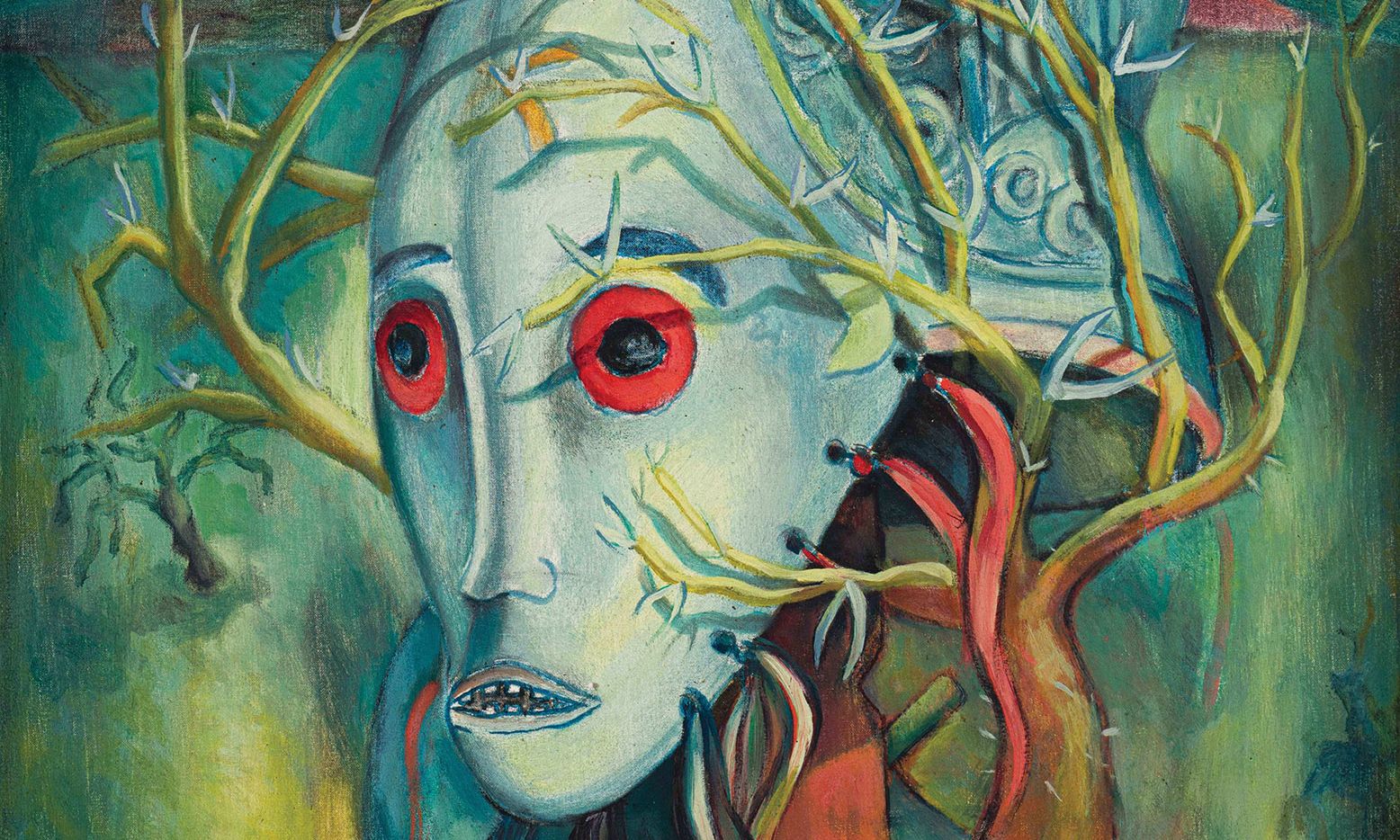Strauss & Co’s London pop-up exhibition of Alexis Preller’s work included Fetish Enthralled (1945), loaned from a private collection and publicly displayed for the first time since it was purchased in 1946 © Alexis Preller, Courtesy Strauss & Co
The South African auction house Strauss & Co staged a pop-up selling exhibition in London last month dedicated to the work of the mid-20th-century South African artist Alexis Preller (1911-75). Held at Cromwell Place, Alexis Preller: Surreal Discovery (5-10 March) coincided with the artist’s retrospective at the Norval Foundation in Cape Town (until 25 November), Christie’s Art of the Surreal sale in London (7 March) and the centennial year marking the founding of Surrealism. The show also presages more to come from the auction house in the UK capital.
Despite the artist’s formative connection to London, his works had never been on show there until the opening of Strauss & Co’s exhibition. Born and raised in Pretoria, Preller worked as a clerk before convincing his family to allow him to train as an artist. He moved to London to study at the Westminster School of Art in 1934. After returning to Pretoria, Preller held his first exhibition in 1935, and two years later he continued his formal art education at the Académie de la Grande Chaumière in Paris. Preller also travelled widely in Europe and Africa, immersing himself in the art and culture of Egypt, ancient Greece, the Etruscans, the early Renaissance period and especially southern and central Africa—all influences visible in his work.
While Strauss & Co’s press statement describes Preller as a “missing Modernist”, the house also sees him fitting a more specific art-historical mould. “Surrealism has been expanded to include more and more art and artists from a global context,” says Alastair Meredith, the auction house’s head of art department and senior specialist, referring in particular to the acclaimed exhibition Surrealism Beyond Borders, which opened at the Metropolitan Museum of Art in New York in 2021 before travelling to London’s Tate Modern in 2022. “We think Preller is definitely an artist that falls under the Surrealist banner. He didn’t identify himself as a Surrealist, but if you look at some of his works—with floating heads, strange spikes and eerie shadows—they definitely have Surrealist overtones,” Meredith adds.
The Strauss & Co show included 20 works, 11 of which were for sale at prices ranging from £38,000 to £165,000. The remaining pieces were on loan from private collections in London. One important painting, Fetish Enthralled (1945), was being publicly displayed for the first time in almost 80 years; it was bought by a diplomat from an exhibition in Pretoria in 1946 and has remained in the same family collection ever since. By the second day of the London pop-up, private collections in Turin and Pretoria had acquired two works, including The Lobster (1957).
Although Strauss & Co’s website describes the Cromwell Place show as its “first official London private sale and loan exhibition”, the auction house has held other types of events in the city of late. Last year it opened a small show of sculptures by Sydney Kumalo and Ezrom Legae at The Africa Centre; in 2022 it participated in lectures and events surrounding William Kentridge’s solo exhibition at the Royal Academy of Arts. “We intend to try and have at least one or two selling exhibitions here in London every year, but I don’t think we have any plans for any auctions in London yet,” Meredith says.
However, he adds, the Preller show “is the start of something bigger” for Strauss & Co in the capital, where he notes the firm has many clients. Kate Fellens, the auction house’s senior business development specialist, recently relocated to London and “pledges to continue [Strauss & Co’s] work in better showcasing artists often neglected outside Africa”, according to the company’s website.
The timing is right, as the market for African art appears resilient. Meredith says Strauss & Co saw a 2% increase in annual turnover, to R363.7m ($19.7m), in 2023. In February, the art market research firm ArtTactic published findings on Modern and contemporary African art showing the category had registered its second-highest sales total ever in 2023 (behind only 2022). “Despite global economic and geopolitical challenges, the African art market only fell by 8.4% in 2023, compared to the general art market which saw a decrease of around 18%,” the report states.
“There has been some broader economic pressure placed on the art market, and we can definitely see the impact of that in South Africa,” says Meredith, adding that the country’s forthcoming general election in May has increased the hesitancy and uncertainty in the local art market. “But whenever we have handled top-quality, museum-grade work, the buyers continue to be there, both private collectors as well as institutions.”

